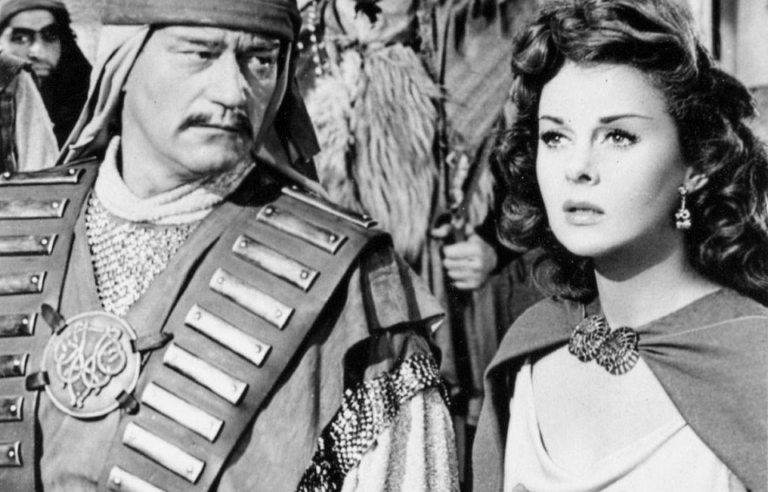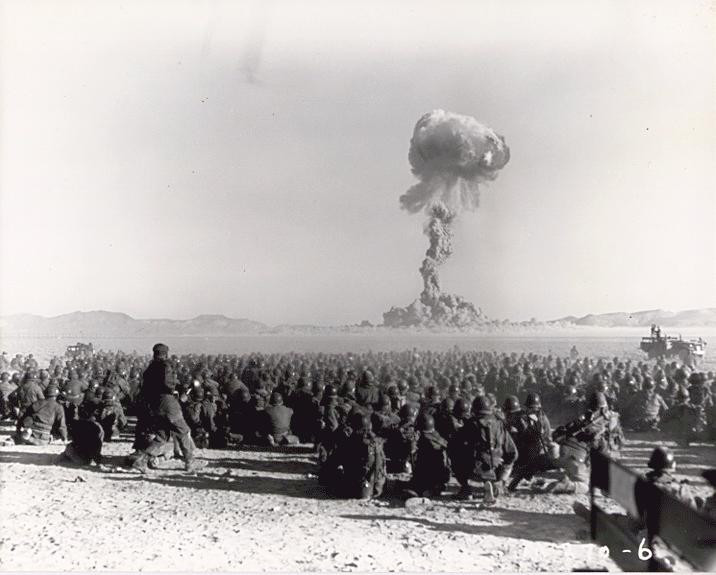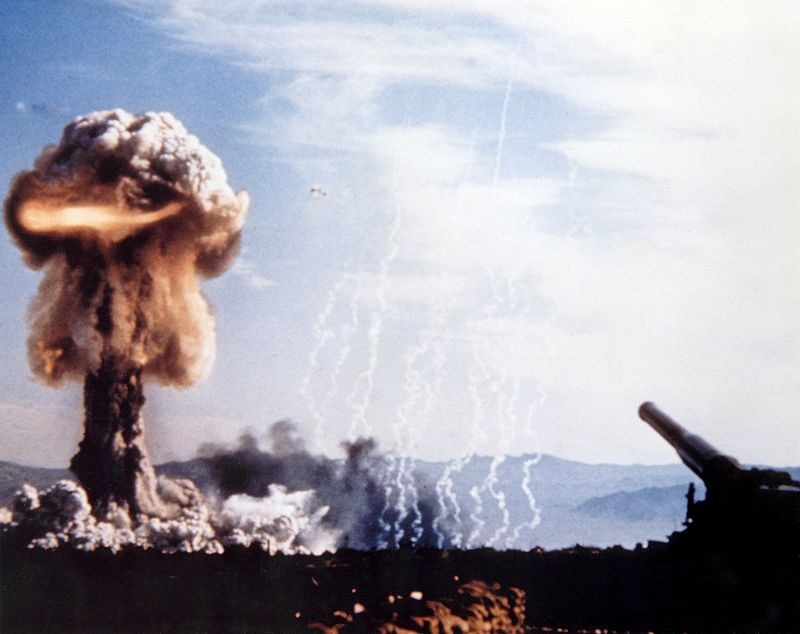“CONQUER” FAILED
With a big budget, an A-list cast and a plot based on a famous historical figure, “The Conqueror” should have been a real “blockbuster.” But the final bombshell was. was “blasphemed” when faced with criticism of “bending history” and worse, it was associated with the tragedy of radiation poisoning, caused by US nuclear tests in the Nevada desert.
Dick Powell’s 1956 historical epic “The Conqueror” is one of the worst rated films of the 1950s. The film was under budget and received heavy criticism at the time. “The Conqueror” revolves around the war life and love of Mongol leader Genghis Khan, but the male lead is a white actor. Even though he accepted the role when he was at the peak of his career, actor John Wayne still received a lot of criticism. Many critics believe that the film has twisted history and “whitewashed” race.
“The Conqueror” has appeared in books about the worst movies, including “The 50 Worst Movies of All Time” by Michael Medved, Harry Medved and Randy Dreyfuss. It was also the last film produced by Howard Hughes, who later spent his own money to buy every print of “The Conqueror,” ensuring it was kept out of the public eye. But Universal finally bought the rights to the film in 1979.
Not only surrounded by critics, the fate of “The Conqueror” and its creators is much more tragic. As a result, within 25 years after filming ended, nearly half of the cast and crew had various types of cancer and 46 people died from this evil disease.

The tragedy stems from the fact that, to recreate the Mongolian steppes, “The Conqueror” was filmed on location on the outskirts of St. George, Utah, more than 200km as the crow flies from the US government’s most used nuclear testing facility.
Operation Upshot-Knothole and the radioactive desert
Deserts are often considered harsh and uninhabitable areas. It is no coincidence that most US government programs involving hazardous devices are often conducted in deserts, and the country has some very large deserts.
During the Manhattan Project (the first atomic bomb research and development project during World War II), the US government and related scientists selected several deserts in New Mexico to conduct atomic tests. died in 1945. After the war, they switched to conducting these tests in the South Pacific to keep them secret. However, with the growing paranoia that fueled the Cold War, the ocean was not the safest place to test nuclear weapons, so US officials decided to return to the inland desert to continue. continue nuclear testing activities.
The US Atomic Energy Commission (AEC) finally chose a desert test site in Nevada, one of the reasons being that the wind direction here will help blow away launch hazards. radiation from population centers in Las Vegas and Los Angeles. Instead, these dangers would spread westward, where there were ranches along with Native American and Mormon communities.

From 1951 to 1962, testing programs at the Nevada National Security Site detonated more than 100 nuclear bombs, spreading radioactive fallout to Utah and Arizona. However, the government was not worried about this, or rather, they underestimated it. Huge plumes of pale pink radioactive dust have spread across valleys and rocky canyons in southern Utah and northern Arizona. Nuclear bombs are given “cute” names that belie their destructive nature, like Annie, Eddie, Humboldt or Badger.
What is more surprising is that the authorities even promote these as a public spectacle and a patriotic activity. “Your best course of action is not to worry about radioactive fallout,” an AEC book says. Families and couples also drove to vantage points to watch nuclear testing, then drove home as radioactive fallout descended on their communities.
“Spectacular atomic explosions mean progress in defense, no reason to panic,” said an editorial in The Deseret News. Clint Mosher, a journalist, said he had never seen a more beautiful sight. “It’s like receiving a letter from home or a firm handshake from someone you admire and trust.”
In that series of tests, 11 bombs were detonated alone in 1953 as part of a special test called Operation Upshot-Knothole, an effort to find a way to launch a nuclear warhead from a cannon. ground instead of dropping them from airplanes.

The landing of the film crew
Operation Upshot-Knothole was launched just a year before “The Conqueror” went into production. While the Atomic Energy Commission assured studios and locals that nuclear bomb testing was 100% safe, not much is known about the long-term effects of radiation and the effects of nuclear fallout has not yet been studied.
In 1954, St George’s 4,800 residents found themselves playing host to a strange invasion of actors, producers, technicians and stuntmen. Howard Hughes splashed the cash on what he intended to be a sensational tale of romance and epic battles on the Asian steppes. The cast and crew filled motels and recruited locals as laborers and extras. About 300 Indian Shivwit played Mongolian villagers.
While “The Conqueror” was going through difficult scenes, radioactive dust was still silently flying away with the wind. The filmmakers did know about the nuclear tests, but the full effects of the radiation were not known for many years afterward.
After 13 tiring weeks in Utah, to save time and money, producer Howard Hughes built the filming set of “The Conqueror” right in Hollywood. However, to maintain visual consistency, he required 60 tons of soil to be transported from the original location in Utah to the film capital, which further exposed the cast and crew. radiation.
According to some nuclear scientists, the radiation level from the nuclear test site in Nevada is 10 times higher than the Chernobyl disaster.
Continue reading Last episode: When the ‘monster’ of cancer rages







